Asus Rampage III Black Edition Review
Written by
Clive Webster
May 19, 2011 | 07:52
Tags: #extreme-cooling #overclocking #rampage #rog #water-chiller #water-cooling
Companies: #asus
1 — Asus Rampage III Black Edition Review2 — Asus Rampage III Black Edition Overclocking3 — Testing Methods4 — Media Benchmarks 5 — SuperPi, WPrime 1.55, 3DMark Vantage and 3DMark 116 — Rampage II Black Edition Performance Analysis and Conclusion
Manufacturer: Asus
UK price (as reviewed): £359.98 (inc VAT)
US price (as reviewed): $589.99 (ex tax)
You could think of the think of the Rampage III Black Edition (R3B) as the Rampage Kitchen Sink Edition. That may sound a bit mean-spirited, but the R3B just has so much technology squeezed into its 305 x 269mm (W x D) PCB. The R3B is the pinnacle of Asus’ motherboard range; it sits above even the Rampage III Extreme in terms of gimmicks, gizmos, overclocking prowess and anything else the company’s fearsomely innovative design team can imagine.
Click to enlarge
Furthermore, the motherboard itself has 802.11n WiFi and Intel Gigabit LAN built in, plus an eight-channel Creative SupremeFX X-Fi 2 audio codec. This might support all the fancy EAX 5.0 game audio effects, but it does so in software and there’s no Crystallizer either.
Bluetooth 3.0 is provided, and there are four network controllers, two audio processors and more overclocking tools than you could possibly use – the lack of tea-making facilities seems almost stingy.
Plus there’s the new Thunderbolt add-in card, which incorporates a Killer NIC processor and an Asus Xonar two-channel sound chip. However, we’ve found Killer NICs don’t improve online game performance much in these days of reliable high-speed broadband. Whether or not the Thunderbolt card is useful brings us onto the thorny issue of what exactly the R3B is for – or rather, whom it is for.
Whether or not the Thunderbolt card is useful brings us onto the thorny issue of what exactly the R3B is for – or rather, whom it is for.
The Thunderbolt card has gamer tech written all over it, and yet the board has a plethora of extreme overclocking, LN2-friendly features. There is an OC Zone towards the top of the front edge of the board, which not only has an LN2 mode jumper (to remedy the cold-boot bug at sub-zero temperatures), but also eight voltage readout points.
There’s also a bank of switches to enable and disable the four 16x PCI-E slots individually, so that you can troubleshoot faults without having to remove cards – next to each switch is an LED to show whether or not the slot is active. Nearby, you’ll find a Go button to load a memory overclock profile automatically, as well as conveniently placed power and reset buttons.
Click to enlarge
Elsewhere you’ll find two 8-pin EPS12V power connectors for the CPU, a button to switch to another saved BIOS profile (LEDs nearby tell you which one you’re using) and a jumper to enable QPI loadline calibration.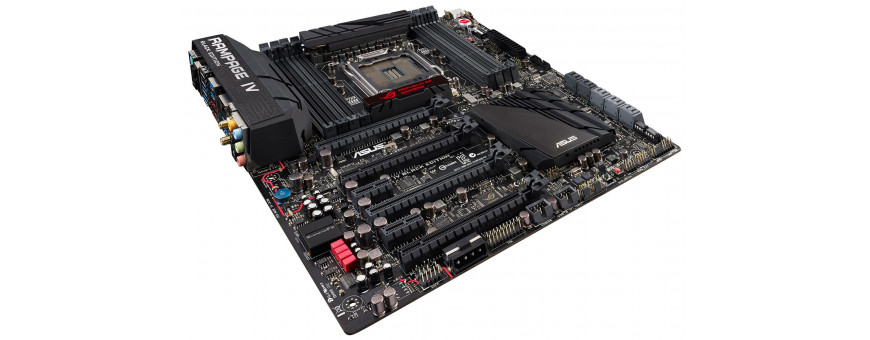 Plus, if you’re really struggling with your LN2 to the point where the board won’t even POST, there’s a Q Reset button to kill the power for a bit and ‘help the CPU recover from a frozen condition.’
Plus, if you’re really struggling with your LN2 to the point where the board won’t even POST, there’s a Q Reset button to kill the power for a bit and ‘help the CPU recover from a frozen condition.’
To round off the list of crazy overclocking features on the board before we even delve into the BIOS, there’s the RoG Connect port on the rear I/O that lets you overclock the board remotely from a laptop (or from a smartphone via the Bluetooth link). This really isn’t a motherboard for typical PC gamers – it’s an overclocking leviathan.
Specifications
- Chipset Intel X58
- CPU support LGA1366 Core i7, Core i7 Extreme Edition
- Memory support 6 slots: max 24GB DDR3 (2,200MHz)
- Expansion slots Four 16x PCI-E slots (Two 16x or one 16x and two 8x, or four 8x), two 1x PCI-E slots
- Sound Creative SupremeFX X-Fi with 8-channel support. Asus Thunderbolt (Xonar) with 2-channel support
- Networking Asus Thunderbolt (Killer NPU) Ethernet, Intel Gigabit Ethernet, WiFi 802.
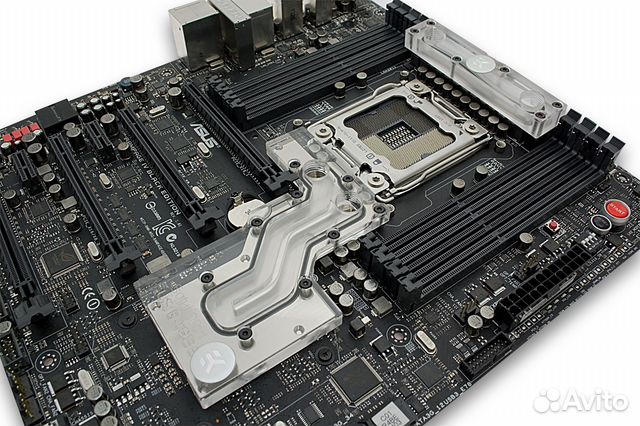 11b/g/n, Bluetooth 3.0 + HS
11b/g/n, Bluetooth 3.0 + HS - Overclocking CPU clock 100-500MHz; max voltages: CPU 2.3V, RAM 2.504V, IOH 2.1995V, ICH 2.00075V, QPI DRAM 2.5V, 2.015V, CPU PLL 2.05375V, ICH PCIE, 2.05375, QPI/PIE Tuning, CPU Differential Amplitude 700-1000mV, CPU and IOH Clock skew, Extreme Engine Digi+m QPI, IOH, DRAM frequency: 1x or 33x
- Ports 6x SATA 3Gbps, 2x SATA 6Gbps, 1x PS/2, 11x USB 2, 4x USB 3, 2x LAN, 6x surround audio outputs, 2x line in, 2x mic, 2x eSATA 6Gbps
- Dimensions (mm) 305 x 269 (ATX)
1 — Asus Rampage III Black Edition Review2 — Asus Rampage III Black Edition Overclocking3 — Testing Methods4 — Media Benchmarks 5 — SuperPi, WPrime 1.55, 3DMark Vantage and 3DMark 116 — Rampage II Black Edition Performance Analysis and Conclusion
ASUS Rampage III Extreme Black Edition Review
Later this year Intel will introduce an all new platform for its enthusiast segment dubbed the Sandy-Bridge E; “E” for Extreme! With the new platform comes an all new socket: the 2011. Intel has a habit for launching a new socket for every processor line it launches. Though Intel promises that Ivy Bridge series of processor will work with the current p67 line of motherboards, it (Ivy Bridge) will have its own platform controller hub. Intel plans to include enough new features in it to entice existing users into upgrading. This will include native USB 3.0 support and more importantly native PCI-e 3.0 support (probably).
Intel has a habit for launching a new socket for every processor line it launches. Though Intel promises that Ivy Bridge series of processor will work with the current p67 line of motherboards, it (Ivy Bridge) will have its own platform controller hub. Intel plans to include enough new features in it to entice existing users into upgrading. This will include native USB 3.0 support and more importantly native PCI-e 3.0 support (probably).
The existing King of Intel processors is the Core i7-990X. A 6 core 12 thread part that fits into a socket 1366.. Launched more than 2 years ago the S1366 has seen off five major mainstream chipsets (P55, H55, P67, H67 & Z68) and still comes out on top (as far as Intel’s marketing is concerned). The chipset that powers these boards is the X58.
For its one final hurrah major manufacturers have launched what can be described as the pinnacle of X58 boards. Asus Rampage III Extreme Black Edition (R3E-BE for short) is one such board. Do we really need another X58 board considering there is not much life left in the platform? Are these boards borne out of a desire to not let the competitors get a one up on them? Or are these genuine parts with genuine features and they deserve to be called the last great Kings of X58? Read on to find out.
The new member of Republic of Gamers clan
Republic of Gamers (ROG) was born (at Asus) about 5 years ago as a platform for enthusiast products. Motherboards that fall under the ‘ROG’ banner include the ‘Maximus’ & ‘Rampage’ brands and are further categorized as ‘Formula’, ‘Gene’ or ‘Extreme’. The Maximus range caters to more mainstream enthusiast products (e.g. those based on the P55 PCH), while the ‘Rampage’ caters to the top of the line products (right now those based on the X58). The Extreme classification is reserved for the ultimate in product features. The Rampage III Extreme represents the 3rd generation of Rampage motherboards. The ‘Black Edition’ is a first for this generation. This time around Asus has aimed for the absolute highest tier in performance for a single socket based board. This is what Asus has to say about the ROG series:
“The Republic of Gamers consists only the best of the best. We offer the best hardware engineering, the fastest performance, the most innovating ideas, and we welcome the best gamers to join in. ”
”
Mother Board At A Glance
This is a E-ATX board folks! You will definitely need a full tower chassis to fit this! Though it is still smaller than the EVGA SR-2 (which requires a extra special over sized case).
Other than that you get all the ROG goodies. What sets this ‘Black edition’ apart from the usual run of the mill Extreme is the inclusion of the special NPU (Network Processing Unit) coupled with audio circuitry dubbed the “Thunderbolt”, wifi, extra power to the processor and some specific features for Liquid Nitrogen over-clocking.
We’ll look at the board and packaging before we delve into what makes the Black Edition stand out from the crowd of other ROG boards.
Packaging – Designed to protect & attract!
The packaging for this product can be described as ‘monstrous’. I have never seen such a massive box for any of the motherboard I have used. The front of the box has a large product logo in the center, with the ROG label at the top.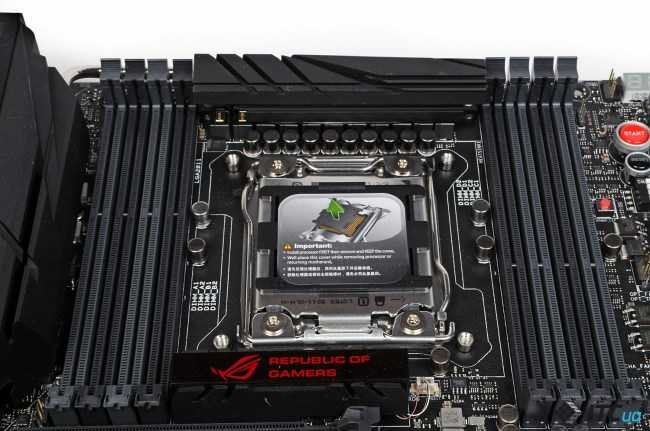 The company’s name is rather diminutively printed at the bottom of the box together with the socket, processor and GPU support logos next to it.
The company’s name is rather diminutively printed at the bottom of the box together with the socket, processor and GPU support logos next to it.
Opening the front lid of the gate fold designed box reveals the motherboard through a transparent protective covering. Salient features of the board are described in some detail on the inside of the lid. It covers all the basic amenities offered by the board; dedicated NPU (with its audio components), ROG specific features, bundled software and over clocking features.
The back of the box pictorially displays the NPU (Thunder bolt), ROG Connect, Blue tooth +HS and the Extreme Engine Digi+. The rest of the back lists the motherboard specifications. At the very bottom the usual company’s email & address, warranty information and safety regulation logos are shown.
The box is so big that it needs a carrying handle. This is something that has been seen before on the P6T Deluxe and several other Asus boards.
Opening the box reveals a cardboard shroud that holds the motherboard covered by a plastic lid. The lid itself has a little niche for the Thunderbolt add in card.
The lid itself has a little niche for the Thunderbolt add in card.
The box certainly tells a lot about the board: It is HUGE! We got the box via courier and despite the damage to the external carton that the box was in, the product itself remained undamaged. The box thus serves its purpose, both to protect and attract!
Accessories
The board comes chock full of extra goodies. Apart from the usual disks, manuals, cables and the customary ROG sticker the board is bundled with some nifty extras. We will talk about the specific accessories after covering the basics
SATA Cables
The board comes with 3 pairs of SATA 3Gbps cables and a pair of SATA 6Gbps cables. If you happen to have a 6Gbps device you will have to use this cable to take advantage of the extra bandwidth offered by the SATA 6Gbps ports.
Multi GPU Cables
You get the X-Fire cable, an extra long SLI cable and a 3 way SLI bridge with the board.
IO plate/ module/ Q-Connectors
The board is bundled with Asus “Q” accessories.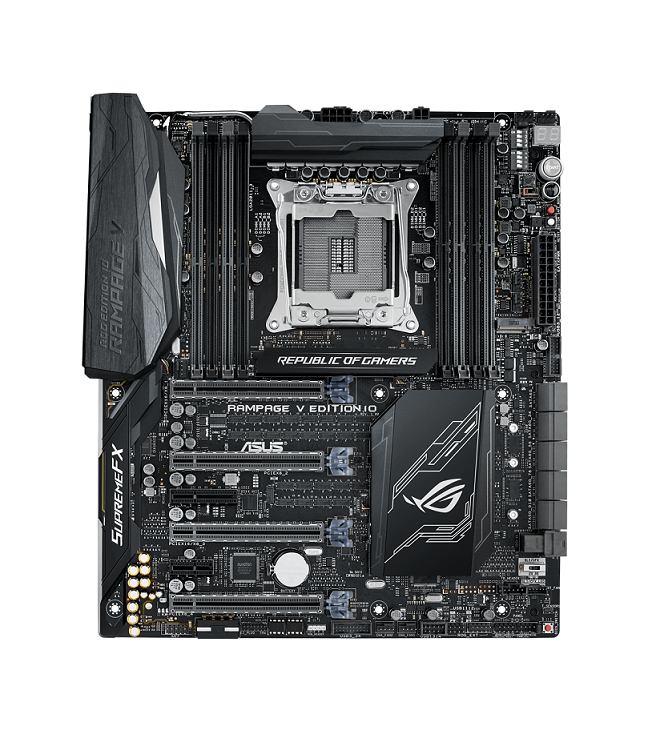 These help “Q”uicken the installation time. The board also comes with a E-SATA and USB 2.0 module to allow for enhanced connectivity beyond what is provided at the rear of the board. There is a cut-out sticker sheet to label SATA ports and cables.
These help “Q”uicken the installation time. The board also comes with a E-SATA and USB 2.0 module to allow for enhanced connectivity beyond what is provided at the rear of the board. There is a cut-out sticker sheet to label SATA ports and cables.
Thermal Sensor Cables
There are 3 thermal sensor cables that can be placed on either heat sinks or basically anywhere you would want them to be placed. These help monitor temperature. Personally I’d put them behind the in-take and in front of the exhaust fans to see how much heat is being generated and extracted from the system.
North Bridge Fan
A 40mm fan comes with the board for (extra) Northbridge cooling.
ROG specific accessories: Wi-Fi Antennae
The board supports wifi-n standard and comes with a pair of antennae.
ROG Specific Accessories: ROG connect cable
This cable allows another computer to control over clocking features of the board.
ROG Specific Accessories: Thunderbolt
Thunderbolt is Asus’s fusion of a high quality NIC, the Killer 2100 from Bigfoot and a sound card based on C-media chip. It offers amplified output for headphones with an optical SP/DIF connectivity option.
Thunderbolt comes in the form of a PCI-e x1 plug-in card. The PCB itself is covered in black plastic and carries the Thunderbolt and Xonar logos. The latter is Asus’ brand for audio products.
Manauls/ Disks/ Misc.
There is the usual manual and the DVD disk with drivers and other software. There is a ROG sticker as well as a Audio precision report which highlight the functionality of the thunderbolt network and audio card.
Impressions
As you can see Asus has included everything that every other board manufacturer would and added enough goodies to make the R3E BE stand out from the crowd. If the wifi connectivity does not interest you, the Thunderbolt network & audio solution will. With the inclusion of the BEST Nic around together with specialized audio hardware for headphone use, Asus has included a very useful accessory with the board.
With the inclusion of the BEST Nic around together with specialized audio hardware for headphone use, Asus has included a very useful accessory with the board.
R3E Black Edition Motherboard –LOADED!
The motherboard is all black with bits of red on the X58 heatsink. As has been mentioned before, this is an E-ATX board and this somewhat larger than the usual ATX boards. We’ll talk about the motherboard and move onto specific features that make this board ‘special’
Back Panel
The IO section of the motherboard features all the usual USB 2.0 (7 ports, with one ‘extra’ port for ROG connect). There are the audio jacks, E-SATA ports and a combo PS/2 mouse/ keyboard port.
Also on the back panel is a ROG connect on/off button, USB 3.0 ports and connectors for the wifi antennae.
Despite the board featuring a Killer 2100 Nic, the board also utilizes an Intel Nic on the back panel as well. It is possible to use both the interfaces together.
A clear CMOS switch completes the back panel.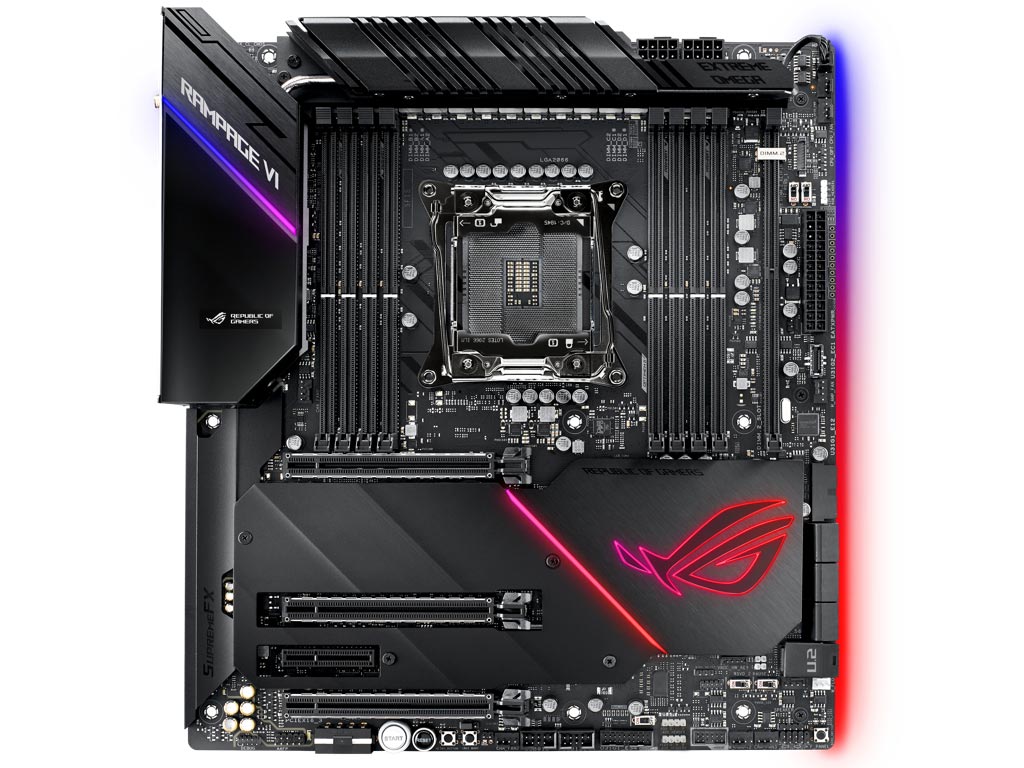
With a mix of usual and un-usual the back panel section adds extra connectivity options (wifi) that is specific to the black edition.
Socket Area
The board comes with a Lottes manufactured LGA 1366 socket. If you go back a couple of years, to the launch of the socket, you might recall the ‘issues’ with the socket manufactured by Foxconn. Those days are long gone, but the memory still lingers. The socket is surrounded by X58 heat sink (left) and power regulation circuitry heatsink (rear). In front of the socket are the 6 DDR3 memory slots.
The heat sinks should not interfere with exotic air cooling setups. The first memory slot might not be able to incorporate an extra-tall heat sink equipped module if a large air cooler is used.
The power regulation circuitry uses the military grade components ensuring operation at high ambient temperature and long life. They also have the ROG logo on it.
<
X58 NORTHBRIDGE/ ICH 10R SOUTHBRIDGE
The Northbridge (though not in the strictest sense of the word) is covered by a black heat sink with red highlights.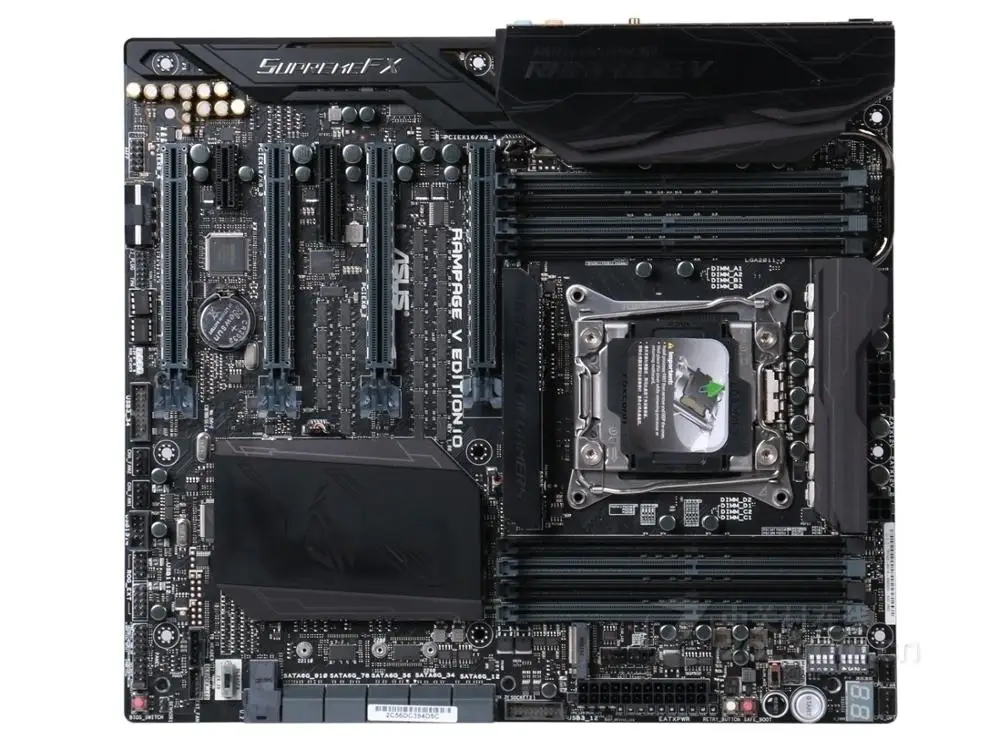 It has a red ROG logo which lights up when powered. The heatsink can be augmented with a 40mm fan bundled with the board.
It has a red ROG logo which lights up when powered. The heatsink can be augmented with a 40mm fan bundled with the board.
The board relies on the X58 for all of its PCI-e 2.0 lanes. There is no NF200. This restricts the bandwidth available when all 4 x16 slots are occupied (to x8 speeds). The real world impact might not be that much, but when you are offering such a complete package at a premium price, one would expect it to be complete. The addition of NF200 would have been welcome.
The ICH 10R is covered with a extra large flat heat sink. The heat sink does not interfere with the use of extra long video cards.
Memory Slots
Like almost all X58 boards (barring the original DX58SO from Intel for example), the black edition comes with 6 DDR3 memory slots. The board can take up to 48 GB of RAM and supports over-clock speeds of 2200 MHz. This is higher as compared to the 1066 MHz that the processors that fit into these sockets officially support.
As the Core series of processor that are compatible with the board have a triple channel memory controller, you will need three stick to get the maximum benefit. The memory slots come in two shades of ‘black’ to indicate which slots work in unison to provide triple channel connectivity.
Power Connectors
The board is chock full of power connectors. There is the usual 24 pin main power connector, 2 8pin CPU power connectors (EATX 12V compliant). There is also a 4 pin molex connector next to the PCI-e slots to provide them with extra power.
Expansion Slots
The board has 2 PCI-e x1 connectors. If you connect the Thunderbolt card that leaves one x1 slot free. Using the Thunderbolt also implies that it won’t be possible to use three double slot cooler cards in 3 consecutive x16 slots.
There are 4 PCI-e x16 slots which can work in various bandwidth modes depending on the number of slots occupied
For three cards it is possible to do x16; x16/x16. But if you use all four slots the bandwidth is reduced to x8/x8/x8/x8. This is because that the board relies on the X58 for its lanes rather than including an additional NF200 chip.
But if you use all four slots the bandwidth is reduced to x8/x8/x8/x8. This is because that the board relies on the X58 for its lanes rather than including an additional NF200 chip.
The board is capable of doing 3 way SLI or 4 way XF.
Storage
There are 8 SATA ports, 6 of which are SATA 3.0 Gbps (controlled by the ICH 10R) and offer Raid 0,1,5 and 10 support. Next to these are 2 SATA 6.0Gbps ports (grey), handled by the Marvell 9182 PCIe controller.
There are usual USB 2.0 connectors (2 connectors for 4 ports) on the board as well as a USB 3.0 connector along the front edge (for 2 USB 3.0 ports). The USB 3.0 connectivity is provided by a NEC controller.
Specialized ROG Features
Extreme Digi+
Though not unique to the Extreme series (it is found on the P67 boards by Asus), the components used in the DIGI+ voltage regulation modules for this board do make this stand out from the rest of the Asus crowd. This board has an 8 phase power regulation to the processor , 3 phase regulation to the memory, X58 power and QPI. Some might be surprised to learn that the power regulation on the plain vanilla X58 boards from Asus have a 16+2 design. What gives? The answer is quiet simple! The components used on this board can regulate more power than the run of the mill components found on other boards. Thus the 8+3+3+3 design either meets or exceeds the performance of the 16+2 design used on other boards. The digital architecture reduces signal noise and energy consumption.
Some might be surprised to learn that the power regulation on the plain vanilla X58 boards from Asus have a 16+2 design. What gives? The answer is quiet simple! The components used on this board can regulate more power than the run of the mill components found on other boards. Thus the 8+3+3+3 design either meets or exceeds the performance of the 16+2 design used on other boards. The digital architecture reduces signal noise and energy consumption.
Overclocking Zone & Other overclocking friendly features
The right front edge of the board (next to the 24pin power connector) has several special features that make up the “over-clocking zone”.
The area starts off with a “GO” button that initiates the Mem OK! algorithms. This helps in the use of un-supported memory.
Next to this are 4 on/ off rocker switches that control PCI-e x16 slots. This makes diagnosing a dead video card easier. It is possible to turn individual slots off to figure out which of the cards is not working.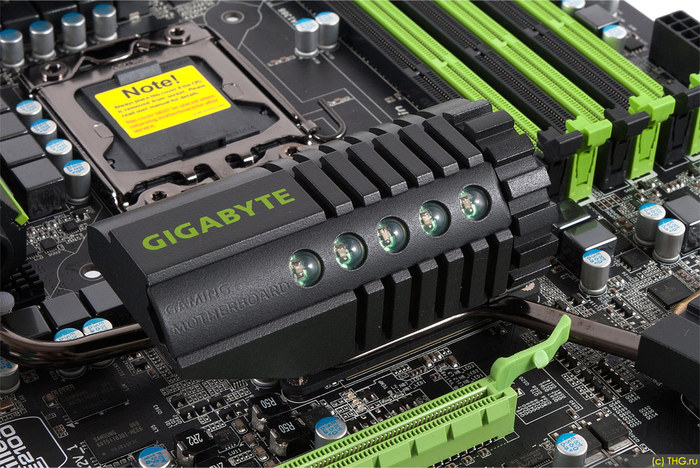 This is a very welcome feature and one that Asus should include on all ROG boards. There is a reset as well a power switch. Below these is the probelt area. This has individual points to measure voltage to various board components. Those who like to get their hands ‘dirty’ can use these points to accurately calculate voltages supplied. A 2 digit LED debug display is also included. This is in contrast to the LCD solution bundled with the Rampage II Gene. Just above the reset switch is a LN2 jumper. This allows the user to bypass the cold boot bug when using exotic cooling solutions like LN2.
This is a very welcome feature and one that Asus should include on all ROG boards. There is a reset as well a power switch. Below these is the probelt area. This has individual points to measure voltage to various board components. Those who like to get their hands ‘dirty’ can use these points to accurately calculate voltages supplied. A 2 digit LED debug display is also included. This is in contrast to the LCD solution bundled with the Rampage II Gene. Just above the reset switch is a LN2 jumper. This allows the user to bypass the cold boot bug when using exotic cooling solutions like LN2.
A series of LEDS, located below the 24 pin power connector, the “Q-LEDS” show component activity. It can help diagnose a ‘dead’ link in the system.
There are LEDs for the Northbridge, CPU, memory and other components which can denote the state of voltage, temperature of these parts (Voltminder LEDS).
There is also a ‘Q reset’ button next to 8 pin power connectors. This temporarily breaks the power feed to the CPU and helps it recover from a frozen condition when using LN2 for cooling.
The ROG connect and iDirect allow either wired or wireless control of over-clocking respectively. It is possible to use mobile devices like iPod to control and tweak over-clocks.
Bluetooth V3.0 +HS
By employing the 802.11 layer of the new blue tooth standard, the board supports high speed data transfer over Bluetooth protocol. This is used for iDirect connectivity.
Audio
Apart from the Audio connectivity provided by the Thunderbolt, the board features a RealTek audio solution. Asus uses its license from Creative to provide X-fi audio features including EAX 5.0. However unlike the X-fi hardware based processing all the EAX calculations are done in software.
Fan Connectors
There are a total of 8 fan connectors featuring PWM control. There are 2 CPU fan connectors, 3 chassis fan connectors and 3 optional fan connectors. They feature Q-fan control for noise/ performance balance.
Network
Apart from the Bigfoot Nic, the board also features an Intel based Nic on the board itself.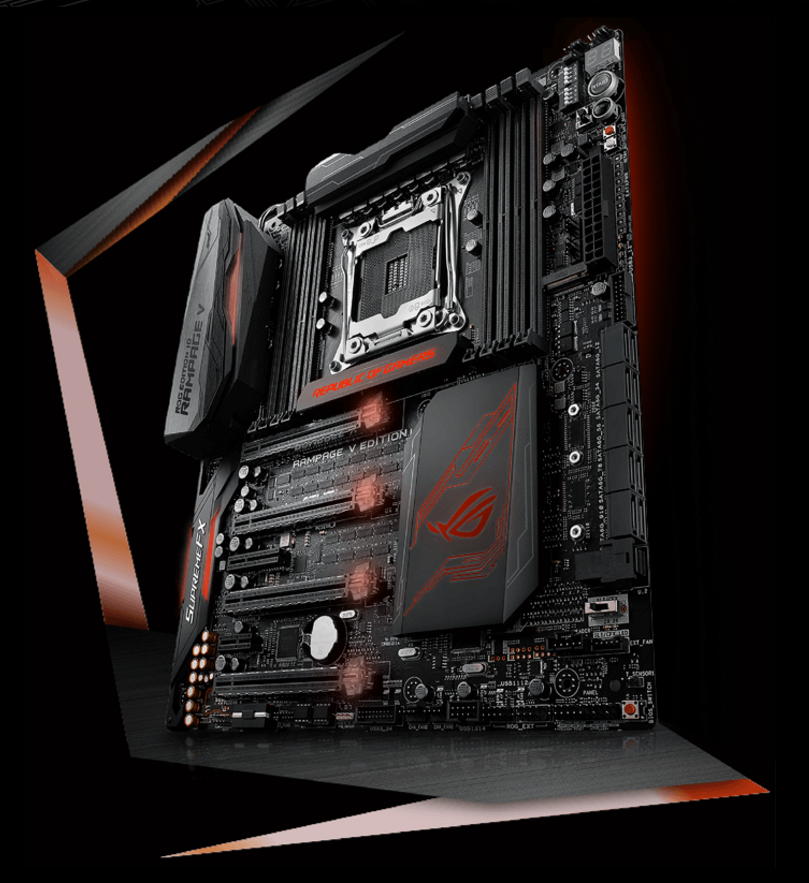
BIOS
The board comes with two BIOSes. It is also possible to flash the BIOS with only a flash drive and nothing more! The BIOS flash back switch on the motherboard is there for this purpose.
Unlike the recent P67 series of boards, this board does not use EFI, but the good old bios. No mouse driven GUI here. Apart from that there is no shortage of over-clocking options in the Extreme tweaker menu. There are enough parameters to satisfy the most curious of the tinkerers!
Design Impressions
Had Asus included a Coffee machine the package would have been complete! Seriously folks this is one very complete motherboard. Had Asus included a NF200 chip to add extra PCI-e lanes and maybe another PCI-e x16 slot it would have been the board. But even as things stand this is a very attractive bundle.
The essential CPU-Z shot
Bundled Software
The board includes the usual array of Asus software & drivers. Their all in one AI Suite combines several functions including over-clocking, monitoring and system information:
Their all in one AI Suite combines several functions including over-clocking, monitoring and system information:
Anyone buying this board will probably only use the over-clocking utility to fine tune rather than setup over clocks. This is not to say that the tool does not work, it does; it is really not for purists but for beginners. And beginners are probably not going to buy this board!
Test Setup
|
Processors |
Core i7-2600K Core i7-920 |
|
Boards |
Asus Sabertooth P67 (Core i7-2600K series) Asus Rampage III Extreme BE(Core i7-920) Asus P6T Deluxe V2 (Core i7-920) |
|
Memory |
Corsair DDR3-1333MHz 2×4 GB. Corsair DDR3-1333MHz 3×2 GB. Total 6 GB (920) |
|
Video |
ATi 6950-2GB |
|
Hard Disk |
Seagate ST31000528AS |
|
Power Supply |
Corsair HX620 |
|
Cooler |
Thermal Right HR-02 (No fans) |
|
OS |
Windows 7 x64 |
Test Suite
|
Synthetic |
Sandra 2011, X264 Benchmark (HD V3) Cinebench, 3Dmark11 –Physics Test |
|
Real World |
7-Zip |
|
IO Performance |
SATA –HD Tune, USB –Crystal Mark 3 |
|
Gaming |
Far Cry II, Crysis Warhead |
Legend
|
X58BE |
Core i7-920 + X58 (Rampage III Extreme BE) |
|
X58 |
Core i7-920 + X58 (Asus P6T Deluxe V2) |
|
S67 |
Core i7-2600K + P67 (Sabertooth P67) |
Testing Methodology
Testing motherboards is not an easy task, and testing one designed specifically with tons of over-clocking features is even tougher.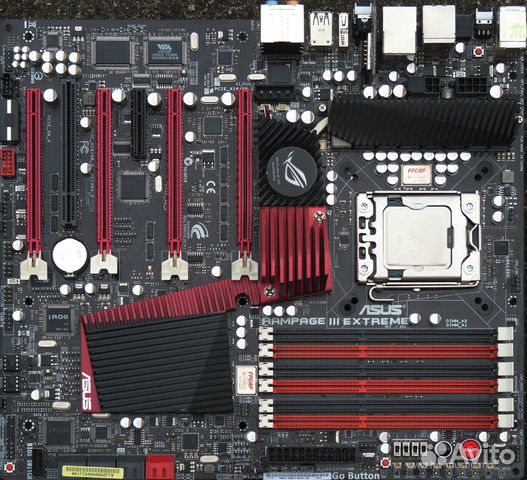 Not all processors over-clock equally and thus unless a processor’s limit is known it would be unfair to put the blame on the motherboard. Fortunately we have our hands on a Core i7-920 whose limit we know well (around 4.0 GHz, not earth shattering, but measurable!). We will test the board’s over-clocking potential using this particular chip. We will also compare the board to one other LGA 1366 platform (the Asus P6T Deluxe V2) and one Sandy Bridge platform (Asus Sabertooth P67 paired to a Intel Core i7-2600K).
Not all processors over-clock equally and thus unless a processor’s limit is known it would be unfair to put the blame on the motherboard. Fortunately we have our hands on a Core i7-920 whose limit we know well (around 4.0 GHz, not earth shattering, but measurable!). We will test the board’s over-clocking potential using this particular chip. We will also compare the board to one other LGA 1366 platform (the Asus P6T Deluxe V2) and one Sandy Bridge platform (Asus Sabertooth P67 paired to a Intel Core i7-2600K).
We will use a mix of synthetic and real world benchmarks to judge performance.
*All results rounded off to the nearest round figure. % Scores shown
Sandra 2011
Sandra is a multi-purpose utility that offers benchmarking of multiple parameters.
The two X58 boards are neck and neck; the P67 is in a different league altogether
X264 Benchmark HD V3
This benchmark measures the encoding performance of the system.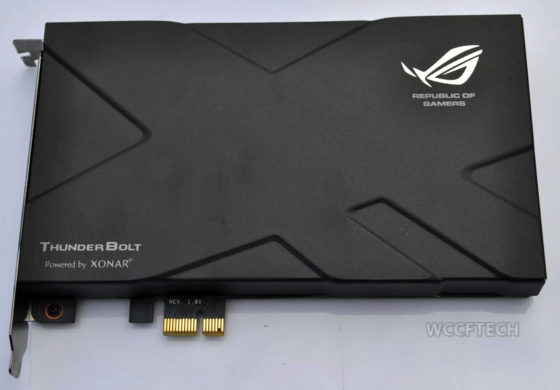
The tests are pretty much a carbon copy of the previous tests.
Cinebench R11.5 TEST
Cinebench is based on Maxon’s Cinema 4D. It is used to compare graphics as well as processor performance.
Much closer, but same old, same old.
3D Mark ’11
As an ATi card was in use, physics test reflects motherboard-CPU performance more than the total score. Here again the two X58 boards perform around the same.
Real World
Some might argue against using 7-zip’s compression and decompression benchmark as a ‘real world’ test. But if you try and think about it for a minute, the benchmark does show how fast the program will either compress or decompress, while negating the impact of disk transfers.
7-Zip Compression
7-ZIP Decompression
The compression tests are more indicative of processor power. More of the same déjà vu experience!
IO Tests
USB Tests
USB performance was compared between boards. As our Asus P6T Deluxe V2 X58 board only features USB 2.0 ports no USB 3.0 tests could be performed on it. Thus it serves as a comparison between USB 2.0 and USB 3.0 performance characteristics. Crystal Mark V3 was used in conjunction with a USB 3.0 compliant Kingston Data Traveler (Ultimate 16 GB)
As our Asus P6T Deluxe V2 X58 board only features USB 2.0 ports no USB 3.0 tests could be performed on it. Thus it serves as a comparison between USB 2.0 and USB 3.0 performance characteristics. Crystal Mark V3 was used in conjunction with a USB 3.0 compliant Kingston Data Traveler (Ultimate 16 GB)
The compression tests are more indicative of processor power. More of the same déjà vu experience!
Both the boards with USB 3.0 perform on par. They both use the same controller thus produce identical results.
SATA Performance
HD Tune was used to assess SATA performance.
The P67 platform proves to be the fastest. The Black Edition does better than the P6T Deluxe.
Gaming Benchmarks
Crysis –Warhead
Gaming tests show that X58 platforms perform the same, while the P67 platform comes on top.
Exploring Thunderbolt
We wanted to see if the Killer NIC was better than Intel NIC when it came to network performance. We used speed and ping tests on both to see if there was any advantage of using the Killer NIC over the Intel NIC
We used speed and ping tests on both to see if there was any advantage of using the Killer NIC over the Intel NIC
Despite the entire hubbub, both the products produce similar results. Though in an ideal situation the Killer NIC (NPU) with all of its processing power will provide better results, but in live testing this is just not so. The reason being the number of variables in an internet connection. Had we tested these two in a LAN gaming the results would probably have favored the NPU.
Testing –Impressions
All the tests, except those based on I/O show that the two X58 platforms perform on the same level. The I/O tests paint a different a picture as the black edition has USB 3.0 and SATA 6Gbps. These new technologies help the black edition produce significantly better results.
Overclocking
Using a Core i7-920, whose over-clocking limit has been established (4.0GHz) we set out to test whether the Black edition could reach the same.
Not only did the black edition reach the same limit, it did so while applying slightly less Core and QPI/DRAM Voltage.
Conclusion
If you jumped straight to the conclusion (without reading the rest of the article), I urge you to at least look at the benchmark charts. The black edition is a niche product. It is not for those who are looking for a decent stable over-clock. There are other motherboards that will offer this and cost much less.
The benchmarks show that this board performs on par with other X58 boards as long as features that are similar are being compared. It does better when using features that are specific to it (like USB 3.0 and SATA 6Gbps), which our other X58 board did not have. The only setup that does better than this is the P67.
And this brings us back to the point made initially: product placement. You will only benefit from the features on the black edition if you can utilize them: LN2 cooling specific features; multi GPU features and so on. Otherwise you can do everything on a ‘run of the mill X58 board’.
Otherwise you can do everything on a ‘run of the mill X58 board’.
What about comparison to the new Sandy Bridge platform? Well as the benchmarks show that newer is better! But again that won’t deter the diehard purists from buying this board. Sandy Bridge is a mainstream platform. It does not offer true x16/x16 connectivity (for multi GPU use) or triple channel memory controller. Granted that the latter shows no benefit in gaming (relevance to ROG lost!) and the former only shows minor performance benefits in 90% of applications. But we are talking about improvements and they can be enough to deter those who want to remain in the top tier of hardware hierarchy. Right now if you want the best in multi GPU technology the X58 is the way to go, (irrespective of performance benefits) over the P67.
Comparisons will also be drawn to the Gigabyte Assassin G1. The latter board offers real Creative X-fi DSP, Killer NIC, Hybrid EFI bios, front panel USB/eSATA connector box. It does however require a larger case as it is an oversized ATX board (ATX-XL). They both use the same Marvel controller for SATA 6Gbps, and no NF200 chip. The front panel box is probably the greatest difference I see between the two. The performance can only be compared once we have the actual product. Until then both look pretty similar on paper.
They both use the same Marvel controller for SATA 6Gbps, and no NF200 chip. The front panel box is probably the greatest difference I see between the two. The performance can only be compared once we have the actual product. Until then both look pretty similar on paper.
If you have the capacity to utilize the extra features on the black edition, you will certainly get your money’s worth. If you have money to spend you will be the envy of your geek crowd. This is after all the Ferrari of the motherboard world and you must be in the right place to enjoy it to its full potential
PROS
- Features Galore
- Even More Features
- Killer NIC
- Dedicated Headphone output
- Exotic Over-clocking solutions
- Excellent Over-clocking options
- Price! (A definite bragging point)
CONS
- No NF200
- Killer NIC (you will see performance difference only under certain situations)
Asus Rampage III Black Edition Schematic Circuit Diagram || Asus Rampage III Black Edition Review
Asus Rampage III Black Edition Review
The Asus Rampage 3 Black Edition motherboard, belongs to the perfect Gamers motherboard brand. This motherboard supports the Intel Core i7 Extreme processor, Nvidia SLI, and ATI Crossfire technology. It is a motherboard with an Expansion Slot (Ex58), which is an LGA 1366 CPU socket. They probably meant the AMD Crossfire processor. There is a ROG Thunderbolt that seems awful enough that it resembles a sound card. We’ll now go a little more into the object that appears to be powered externally. Therefore, that will have a headphone AMP on it. Version 3.0 of Bluetooth is available. We have strong engine DIGI+, their VRM solution, and ROG Connect, their overclocking function that enables you to plug in another computer and change overclocking settings.
This motherboard supports the Intel Core i7 Extreme processor, Nvidia SLI, and ATI Crossfire technology. It is a motherboard with an Expansion Slot (Ex58), which is an LGA 1366 CPU socket. They probably meant the AMD Crossfire processor. There is a ROG Thunderbolt that seems awful enough that it resembles a sound card. We’ll now go a little more into the object that appears to be powered externally. Therefore, that will have a headphone AMP on it. Version 3.0 of Bluetooth is available. We have strong engine DIGI+, their VRM solution, and ROG Connect, their overclocking function that enables you to plug in another computer and change overclocking settings.
There is the Thunderbolt, which is powered by Oxnard. We have an in-built headphone with a headphone AMP guarantee that will enhance sound. That’s a deadly E 2100, and we have a specialized PU. Commitment is not a flawed 2100. Thus, the PCIe 1x, Killer Dick, Extreme Engine DIGI+, and Digital Design Elements coupled for Power ROG Connect is available. The first and WiFi enjoyment new technology lifestyle excellent free antivirus is very cool since we’ve previously discussed Bluetooth 3.0. We offer a few SLI premium WiFi antennae. I believe they first began including these WiFi antennae on their motherboards about that time and then stopped for a bit. We have a USB 2.0 port and an eSATA PCI mount. The chipset fan probably makes a terrible noise, so we don’t advocate utilizing it.
The first and WiFi enjoyment new technology lifestyle excellent free antivirus is very cool since we’ve previously discussed Bluetooth 3.0. We offer a few SLI premium WiFi antennae. I believe they first began including these WiFi antennae on their motherboards about that time and then stopped for a bit. We have a USB 2.0 port and an eSATA PCI mount. The chipset fan probably makes a terrible noise, so we don’t advocate utilizing it.
Front panel audio and USB have extension cables. Similar to the six SATA 2 cables, we also have several SATA 3 cables. Okay, the ROG is here to connect the USB cables for all of them. There is a crossfire bridge, a three-way SLI bridge, and a two-way SLI bridge. One USB 2.0 header and a nice connection for the front panel connectors make connecting a little bit simpler. We have some zip ties here. We have a user manual, some temperature probes, and an I/O shield. We have a support DVD from Intel, a throw-away DVD sticker from the republic of gamers, and an Intel chipset.
A PCIe 1x combo card is available. It consists of the land port and zone, the extremely high-end LAN’s audio features, and the built-in sound system for this board. You can see rampage 3 Black Edition and your serial number information directly on the back of the Thunderbolt powered by zone PCB, which is matte black. The amplified audio out port will be powered by a Molex power connector on the back of the card, which is also where the USB connection and the little USB extension cable were located.
Let’s look at the motherboard itself, and the first thing I notice about it is three guesses. First, matte black PCBs love it; anything with a matte black PCB could be in my system with no problem because matte plaque PCBs look awesome. The next thing I noticed about this board is its non-standard layout. It is slightly wider than an ATX spec. This one is a little wide, so you don’t need additional mounting holes. You don’t need an e ATX case, but you will need a bit more width on the edge of your motherboard or tray to install this board.
Let’s start at the CPU socket right in the middle because that’s a good place to start as I mentioned before that is an LGA 1366 socket that has full support for all the core i7 extremes core i7s on the LGA 1366 platform here. We’ve got the PWM which includes a very, very slick-looking cooler. There’s some NEC splash token. However, you pronounce that chip here, and eight phases of their DIGI+ PWM are eight-plus three-phase power. So that means we’ve got eight higher-quality phases instead of putting a ton of lower-quality phases on this particular motherboard. We’ve got a post LED indicator that’ll give you error codes. There we have start and reset switches on board and voltage checkpoints on the motherboard.
That’s more voltage checkpoints than I’ve seen. I think any other motherboard here is the PCIe 16x switches. You can use these to diagnose video cards. This feature is awesome easily. You’re trying to figure out when you install a couple of video cards there, and you know they have full cover liquid cooling blocks on them.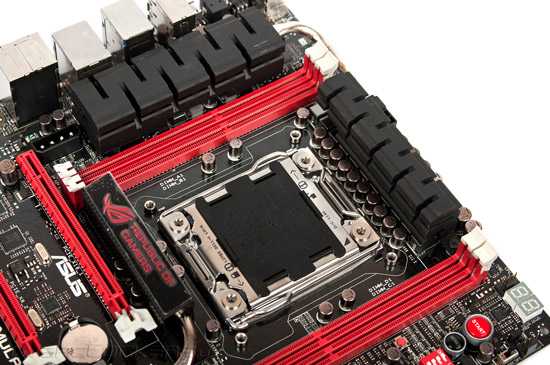 I would have pretty much done anything for this feature.
I would have pretty much done anything for this feature.
We’ve got a pretty sweet-looking Southbridge heatsink with an Asus branding. It’s got a matte black finish. The entire board is almost as black other than a couple of little red accents, which look really good dual BIOS. We’ve got two dedicated BIOS chips, a couple of front USB ports and front panel switches, and a BIOS clear switch. There are four-pin PWM fan connectors, I’ll count them in a minute, but there seems to be a ton on this board. We’ve got a Molex easy plug. If you’re loading this with graphics cards, you might need to provide some exhilaration with our to prevent your 24-pin connector from burning out from providing all that juice through the board. We’ve got a front audio connector on the motherboard, using X by two maximum effects. If you don’t want to use the Thunderbolt card, you still have decent onboard audio, which is cool.
You also have pretty decent onboard Ethernet, so they’re using the Intel Ethernet instead of a third-party chip for the onboard Ethernet. If you don’t want to use the killer 2100 that comes on the Thunderbolt card, let’s look at what we’ve got. The 4-pin PWM fan connectors more. Another thing that I haven’t described yet is it has two PCIe 8-pin connectors. I mentioned a red accent there, so you can bolt that fan on there to get a little bit of additional cooling if you are using water cooling or some other kind of cooling that doesn’t provide any incidental airflow to the Northbridge hitting.
If you don’t want to use the killer 2100 that comes on the Thunderbolt card, let’s look at what we’ve got. The 4-pin PWM fan connectors more. Another thing that I haven’t described yet is it has two PCIe 8-pin connectors. I mentioned a red accent there, so you can bolt that fan on there to get a little bit of additional cooling if you are using water cooling or some other kind of cooling that doesn’t provide any incidental airflow to the Northbridge hitting.
All right, so let’s look at the back I/O where we will find our Bluetooth 3.0 and wireless LAN 802 one. There’s another reset switch-up that’s a very peculiar place for it, and an additional one here is kidding me. Oh yeah, okay, there’s a clear CMOS switch there. Okay, we’ve got one of those PS2 mouse keyboard combo ports. We have six USB 2.0 ports here on the back I/O. We have two USB 3.0 ports and two eSATA ports, and we have our ROG connect button and the USB port for the Intel I mentioned before and the creative X-FI to supreme FX sound, I said. So, this is a checked-out motherboard. There is no doubt about it. We’ve also got some additional heatsink on the back for the PWM and the standard LGA 1366 backplate. All the heatsinks on the front are attached via screws which is nice because they can’t come out like push pins also means if you need to take them off and put them back on, you don’t risk damaging the push pins. Making it impossible. Thank you for checking out my review of the Rampage 3 Black Edition from Asus.
So, this is a checked-out motherboard. There is no doubt about it. We’ve also got some additional heatsink on the back for the PWM and the standard LGA 1366 backplate. All the heatsinks on the front are attached via screws which is nice because they can’t come out like push pins also means if you need to take them off and put them back on, you don’t risk damaging the push pins. Making it impossible. Thank you for checking out my review of the Rampage 3 Black Edition from Asus.
Free download Asus Rampage III Black Edition Review
Download
Free Download BoardView tool for opening or using this schematic diagram
Download BoardView
Motherboard overview ASUS Rampage III Black Edition
- Introduction
- Specifications
- Design and features
- Power system
- Cooling system
- BIOS Capabilities
- Test configuration (BCLK overclocking)
- Base Clock Acceleration (BCLK)
- Test configuration (overclocking LN2)
- Overclocking with liquid nitrogen
- Conclusion
ASUS ROG motherboard lineup has been expanded with a new product — Rampage III Black Edition. Everyone could be the first to see the new top product of the Taiwanese giant at the ASUS booth in Hannover, Germany at the CeBIT exhibition. Rampage III Black Edition was shown to Russian journalists on March 4th. The heads of research and development departments, Albert Chang, Sheron Pan and Chui Lin, came to Russia to represent the board.
Everyone could be the first to see the new top product of the Taiwanese giant at the ASUS booth in Hannover, Germany at the CeBIT exhibition. Rampage III Black Edition was shown to Russian journalists on March 4th. The heads of research and development departments, Albert Chang, Sheron Pan and Chui Lin, came to Russia to represent the board.
Rampage III Black Edition is primarily for enthusiasts, gamers and overclockers. According to ASUS representatives, the new product turned out to be of better quality and more reliable, a number of new overclocking options appeared, in addition, a sound card was returned to the ROG line. The high-quality (thanks to SupremeFX) sound that many people love on ASUS Commando in the Rampage III Extreme or Formula lines was not represented by a separate sound card. But, apparently, when creating the Rampage III Black Edition, they decided not to deviate from good traditions.
ASUS engineers put great emphasis on the board’s overclocking potential. A number of errors and shortcomings in the operation of the board at negative processor temperatures have been fixed, functions have been added to help achieve a higher BCLK frequency, the board’s cooling system has been redesigned, and the design has seriously changed. At first glance, there are quite a lot of changes, but let’s dig deeper and check the board in action.
A number of errors and shortcomings in the operation of the board at negative processor temperatures have been fixed, functions have been added to help achieve a higher BCLK frequency, the board’s cooling system has been redesigned, and the design has seriously changed. At first glance, there are quite a lot of changes, but let’s dig deeper and check the board in action.
Specifications ASUS Rampage III Extreme Black Edition are presented in the table:
| Supported processors | Intel Core i7/Core i7 Extreme Edition in LGA1366 design Full list of supported processors on the manufacturer’s website |
| Chipset | Intel X58 Chipset/ICh20R |
| Supported memory | 6 240-pin DDR3 DIMM slots supporting Tri-Channel Supported frequencies: 1066/1333/1600/1800 (OC)/2000 (OC)/ 2133 (OC)/ 2200 (OC) Maximum capacity: 48 GB |
| Expansion slots |
|
| Multi-GPU support | NVIDIA SLI and ATI CrossFireX support (up to four graphics cards) |
| SATA/eSATA support |
|
| IDE support | missing |
| RAID support | RAID 0/1/5/10 (slots 1 to 6) — Intel ICh20R RAID 0/1 (slots E1 and E2) — Marvell 88SE9182 |
| Network | Gigabit Ethernet — Intel 82567V |
| Audio | Realtek ALC889 7.1 channel HD audio codec |
| Bluetooth | V.3.0 + HS |
| WiFi | IEEE 802. 11b/g/n 11b/g/n |
| USB 2.0 | 6 rear USB 2.0 ports — ICh20R 2 rear USB 2.0 ports combined with eSATA — ICh20R 2 internal USB 2.0 ports — ICh20R 1 USB 2.0 port for ROG Connect — ICh20R |
| USB 3.0 | 2 USB 3.0 ports on rear panel — NEC D720200F1 2 internal USB 3.0 ports — NEC D720200F1 |
| IEEE1394 | missing |
| Motherboard power supply | ATX 24-pin, 2x-8-pin EATX12V, 1x 4-pin Molex |
| Rear panel connectors |
|
| Internal connectors |
|
| Proprietary technologies |
|
| Dimensions, mm | 305 x 269 |
| Form factor | Extended ATX (EATX) |
recommendations
ASUS Rampage III Black Edition was tested in the engineering version. From the delivery set there is only the board itself and the sound card — ASUS ThunderBolt. After comparing the engineering sample with photographs of the retail board, very slight differences were found.
From the delivery set there is only the board itself and the sound card — ASUS ThunderBolt. After comparing the engineering sample with photographs of the retail board, very slight differences were found.
In the end customer product, there will be two Wi-Fi antenna connectors on the rear panel between the CMOS reset button and the combo PS/2 connector. SATA 6 Gb / s connectors received gray color, and red was used in the engineering version. In place of the Realtek ALC889 audio chipX-Fi 2 SupremeFX hologram appeared. It is difficult to understand the sticker there or a completely different microcircuit from the photographs. But, judging by the availability of sound drivers for the external sound card and the built-in Realtek on the ASUS website, we can more confidently say that this is a regular sticker.
The familiar red and black tones of the ROG line have been replaced with all-black. Only small areas of the cooling system are painted burgundy. The board is made on a black textolite, and where the manufacturer highlights the differences between the elements, the black color is replaced by gray. Thus, for example, the differences between the sockets for RAM are shown.
The board is made on a black textolite, and where the manufacturer highlights the differences between the elements, the black color is replaced by gray. Thus, for example, the differences between the sockets for RAM are shown.
The LGA1366 socket remains unchanged: the familiar black mounting frame from Lotes. Massive problems with contact burnout, similar to those on the LGA1156 platform, never arose.
The Black Edition has not received any differences from the Extreme and Formula versions in terms of support for new RAM frequencies. Only the red and black colors were changed to the already mentioned gray and black. By default, when using one set of RAM, the brackets should be installed in the black slots.
You can use 1, 2, 3, 4 and 8 GB RAM sticks. The maximum amount of RAM when all slots are full will be 48 GB. All base frequencies of the RAM are supported, and it is also possible to operate at frequencies up to 2200 MHz, but this is already with overclocking the BCLK bus. The maximum working memory divider on ASUS Rampage III Black Edition, like on most top motherboards based on Intel X58, is 2:12. By default, the BCLK bus of Intel Core i7 processors is 133 MHz, that is, when using the maximum divider, the memory frequency will be 1600 MHz. Higher memory frequencies can be achieved by overclocking the processor by increasing the base BCLK frequency.
The maximum working memory divider on ASUS Rampage III Black Edition, like on most top motherboards based on Intel X58, is 2:12. By default, the BCLK bus of Intel Core i7 processors is 133 MHz, that is, when using the maximum divider, the memory frequency will be 1600 MHz. Higher memory frequencies can be achieved by overclocking the processor by increasing the base BCLK frequency.
All PCI Express version 2.0 expansion slots — 4 x PCI Express x16, 2 x PCI x1. The second and fourth PCI Express x16 slots actually received only eight lines, since half of the pins to these slots are not connected. The presence of an external sound card installed in the PCI-E x1 slot will cause some difficulties for owners of multi-GPU configurations.
To get the best performance from your graphics card and sound card, we recommend installing it as follows:
- 1 video card: PCIE_X16/X8_1, sound card: PCIE_X1_1/PCIE_X1_2;
- 2 video cards: PCIE_X16/X8_1 and PCI_X16/X8_3, sound card: PCIE_X1_1;
- 3 graphics cards: PCIE_X16/X8_1, PCIE_X16/X8_3 and PCIE_X8_4, sound card: PCIE_X1_1;
- 4 graphics cards: PCIE_X16/X8_1, PCIE_X8_2, PCIE_X16/X8_3 and PCIE_X8_4.

When using four video cards with two-slot cooling systems, you will have to abandon the use of an external sound card. And the maximum performance of the graphics subsystem can be achieved only when using a special board ASUS ROG Xpander. The latter is an adapter board with four full-fledged PCI-Express x16 slots supported by two nForce200 chips.
So the most hardcore gamers with four NVIDIA GTX 580s will have to play modern games with built-in sound. It would be more logical to place the PCIE_X1_1 slot as close as possible to the chipset, where the PCIE_X16/X8_1 slot is currently located. And place the rest of the connectors one slot below the current location. But then you would have to sacrifice the second PCI-E x1.
Rear panel includes:
- one PS/2 keyboard/mouse combo port;
- six USB 2.0 ports;
- two USB 3.0 ports;
- two eSATA ports;
- one USB 2.0 port shared with ROG Connect;
- one LAN connector;
- six in/out 3.
 5mm mini-jack 7.1-channel HD audio codec;
5mm mini-jack 7.1-channel HD audio codec; - one CMOS reset button;
- one ROG Connect on/off button;
- two connectors for connecting Wi-Fi antennas.
The engineering version does not have a Wi-Fi module.
With a set of SATA ports, everything is quite standard. Six SATA 3 Gb / s connectors implemented by the Intel ICh20R chipset logic set, two SATA 6 Gb / s provided by the Marvell 88SE9182 chip, two SATA 6 Gb / s. I note that the retail version differs in the color of the SATA III connectors. Engineering red replaced with grey.
Naturally, a separate place on the board is reserved for overclocking and system control. OC Zone — this is how Taiwanese engineers called a small area of the board next to the RAM connectors.
The main innovation was the appearance of the POST code indicator. On Rampage III Extreme and Formula, overclockers especially lacked a built-in indicator, since, for example, 4 x GPU arrays had to be blindly benched. Also in the OC Zone are the Power, Reset and GO LED buttons, four PCI-E x16 mode switches that allow you to disable unused expansion slots. There are ten voltage measurement points on the board: the voltage can be measured on eight different elements, and two points on both edges are ground.
Also in the OC Zone are the Power, Reset and GO LED buttons, four PCI-E x16 mode switches that allow you to disable unused expansion slots. There are ten voltage measurement points on the board: the voltage can be measured on eight different elements, and two points on both edges are ground.
We should also talk about the LN2 Mode jumper. Non-extreme overclockers will never need this mode and should be left off. But for lovers of liquid nitrogen, the function is very useful. Its main purpose is to reduce the temperatures of ColdBug and ColdBoot. The best copies of the top Intel Core i7 990 Extreme Edition or Core i7 980X processors on the Extreme and Formula versions of the boards did not have either ColdBoot or ColdBug only when the RAM was running in single-channel mode.
The dependence of operating temperatures on the number of memory channels is explained by the fact that in new generations of Intel processors, the memory controller is included under the cover of the CPU heat spreader. Reducing the load on the memory controller while reducing the number of channels allows the processor to operate at the boiling point of liquid nitrogen — minus 196 degrees Celsius.
Reducing the load on the memory controller while reducing the number of channels allows the processor to operate at the boiling point of liquid nitrogen — minus 196 degrees Celsius.
At the presentation of the board, Taiwanese engineers claimed that this problem was solved on the Black Edition version. I will return to it a little later in the part devoted to extreme overclocking.
ICS 9LPR918JKLF is responsible for BCLK overclocking. The SetFSB utility “understands” it, so there should be no problems with overclocking the bus from under Windows. But ASUS itself has taken good care of overclockers. Using ROG Connect technology and RC TweakIt software, you can overclock the processor from under Windows from another computer or laptop. Also in the engineering version, there is a special board ASUS ROG OC Panel, which allows you to change the voltage and frequency of the processor directly on the fly. But ASUS ROG OC Station, which received the status of a retail product, is unfortunately not supported, there is no connector for its connection.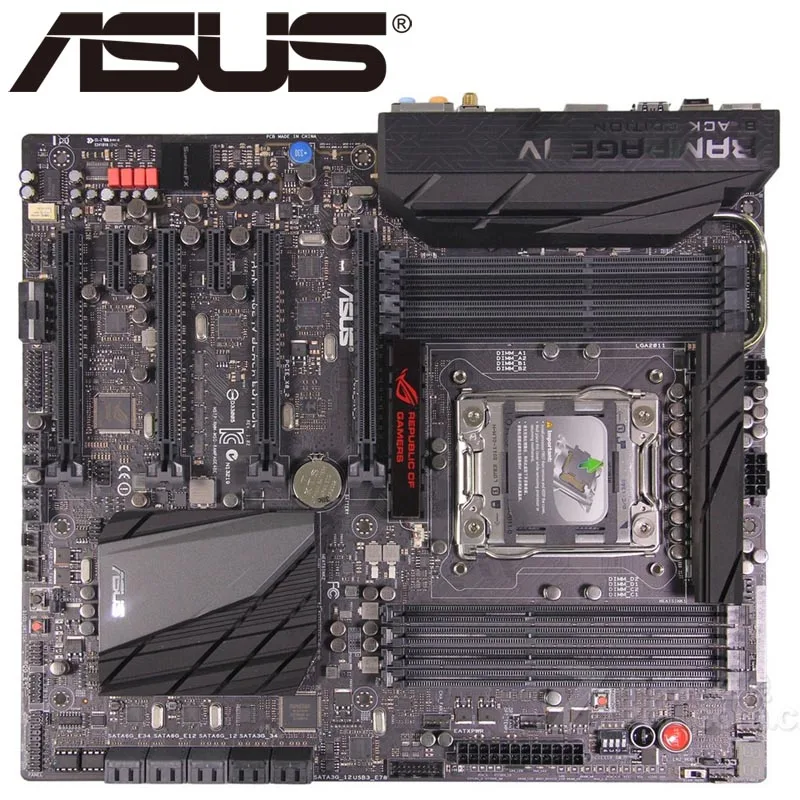
It’s common to have a pair of BIOS chips. You can switch from one chip to another using the BIOS SWITCH button. The presence of two chips is a useful option for overclockers. More than once on Formula (and now on the Black Edition) it happened to get into a situation where, after applying the settings, the board could not start, and resetting the BIOS did not help. Just in such a situation, you can use the second BIOS. Moreover, Extreme / Formula has the ability to flash the BIOS from one chip to another. There is no such option in the engineering version of the BIOS on the Black Edition, but I really hope that it will appear in the release version.
Subscribe to our channel in Yandex.Zen or telegram channel @overclockers_news — these are convenient ways to follow new materials on the site. With pictures, extended descriptions and no ads.
Review and test of motherboard asus rog rampage vi apex
Delivery set
The delivery set of ASUS RAMPAGE IV BLACK EDITION fully corresponds to the status of a flagship solution. Note that the board comes in a black box, with a character on the front panel of the box that is easily recognizable by fans of the Assasin’s Creed series of games.
Note that the board comes in a black box, with a character on the front panel of the box that is easily recognizable by fans of the Assasin’s Creed series of games.
Open the top cover and see the board through the transparent plastic window. The spread also contains general information about some proprietary technologies.
The number of accessories is dizzying. We have not seen such a serious equipment for a long time. Traditionally, the kit includes a user manual, in this case, a 200-page Talmud in English alone, a disk with drivers and software, 10 SATA cables, and a plug on the back of the case. The board comes with flexible SLI and CrossFire bridges, as well as hard adapters for creating configurations with three NVIDIA video cards and four adapters in 4-way SLI mode.
Separate positions include the OC Panel module, as well as a bracket for its installation in a 5.25-inch bay and a cable for connecting to the motherboard.
The box also includes an external antenna, ROG Connect cable, ASUS Q-Connector adapters, a set of stickers for interface cables, and a magnet with the logo of the gaming series. During extreme experiments when attaching a glass, an X-Socket plate can come in handy. But what fans will definitely not refuse to play is a coupon for downloading the full version of Assasin’s Creed Black Flag.
During extreme experiments when attaching a glass, an X-Socket plate can come in handy. But what fans will definitely not refuse to play is a coupon for downloading the full version of Assasin’s Creed Black Flag.
BIOS Capabilities
Rampage VI Extreme Omega motherboard BIOS shell is designed in ROG style. The firmware interface greets the EZ Mode user during the first power on of the system. Here is the main and most important information on the assembly components, OS loading and temperature readings. A separate block shows the rotation speed of the connected fans. Switching to Advanced Mode is done using the F7 key.
By switching to Advanced Mode, the user gets access to all BIOS settings. The settings themselves are concentrated in sections thematically.
The number of settings aimed at overclockers and enthusiasts can amaze even experienced personal PC users. In this regard, the Rampage VI Extreme Omega has almost everything for overclocking the processor and RAM.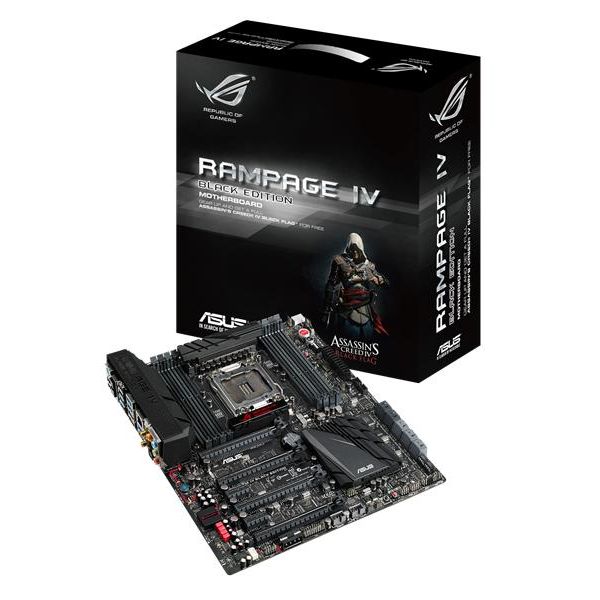
Settings for peripherals, expansion slots, board connectors and drives are concentrated in the Advanced tab.
The monitoring capabilities of the Rampage VI Extreme Omega in the BIOS menu have also undergone a detailed study. It supports not only the provision of information about the current parameters of the system, but also the control of the fans of the cooling components.
The OS boot setup and the choice of boot options are defined in the Boot tab.
To search for service information about the system, update the BIOS firmware, format drives and other things, the BIOS interface of the Rampage VI Extreme Omega board contains the Tool section.
The last Exit tab is used to save the BIOS settings or exit the settings without applying changes.
⇡ # Power and cooling systems of the board
We dismantle the ASUS Rampage III Gene cooling system. The north bridge and the power elements of the power subsystem are cooled by means of radiators connected to each other by a single heat pipe. The base of the heatsink contacts the surface of the northbridge through a thin layer of rather thick thermal paste, and the heatsink of the power subsystem is equipped with a thermal pad. I must say that the pressure of the heatsinks to the elements of the board is quite strong, which improves heat transfer. Since the Intel ICh20R southbridge does not get very hot, a small heatsink installed on it is of no particular interest.
The base of the heatsink contacts the surface of the northbridge through a thin layer of rather thick thermal paste, and the heatsink of the power subsystem is equipped with a thermal pad. I must say that the pressure of the heatsinks to the elements of the board is quite strong, which improves heat transfer. Since the Intel ICh20R southbridge does not get very hot, a small heatsink installed on it is of no particular interest.
Now let’s examine the ASUS Rampage III Gene power subsystem. The CPU power system is made according to the 8 + 2 scheme (8 phases for the Vcore voltage, 2 more phases for the memory controller integrated into the processor), the RAM power system, like the north bridge, has 2 phases, and the south bridge manages with one power phase .
Considering the controllers soldered on the ASUS Rampage III Gene, we became interested in the ITE IT8268R chip, which is on the site. A more detailed study of the description of the IT8268R chip allows us to call it rather an «overclocker’s assistant», since this controller takes over the interaction of the BIOS or ASUS proprietary software with that part of the board’s «stuffing» that cannot interact with them through its interfaces. Thus, ITE IT8268R takes on the role of «translator». To give a simple example, let’s say the user enters the BIOS and sets a certain voltage value, the BIOS sends the corresponding command to the ITE8268R controller, which in turn converts it into a signal that the Vcore voltage controller understands.
Thus, ITE IT8268R takes on the role of «translator». To give a simple example, let’s say the user enters the BIOS and sets a certain voltage value, the BIOS sends the corresponding command to the ITE8268R controller, which in turn converts it into a signal that the Vcore voltage controller understands.
Test bench
| CPU | Intel Core i9-9980XE |
| Video card | Palit GeForce GTX 1070 Ti JetStream |
| Cooling system | ID Cooling ZoomFlow 240 |
| Thermal interface | Arctic MX-2 |
| RAM | Corsair Vengeance RGB Pro DDR4-3600 8Gb*4 |
| Storage device | SSD 64 Gb, HDD WD 3 Tb |
| Power Supply | Corsair RM850x 850W |
| Frame | Corsair 540 Air |
| Monitor | ASUS PB298Q, 29″, 2560×1080, IPS |
| Operating system | Windows 10 Pro 64-bit |
| Drivers |
GeForce 425. 31 31
|
With the Rampage VI Extreme Omega motherboard, ASUS focuses on working with Intel’s flagship processors. Therefore, for testing, we immediately took the oldest 18-core Core i9-9980XE. Not all LGA 2066 motherboards can work correctly with this 165 W processor. Therefore, it was doubly interesting how the Rampage VI Extreme Omega would behave with the Core i9-9980XE in real conditions.
To test the Rampage VI Extreme Omega, a test bench was assembled using a liquid processor cooling system based on a 240 mm radiator.
An interesting feature of the Rampage VI Extreme Omega is the display in the upper left corner. It can display various information during system operation, including the temperature of the processor.
UEFI
The UEFI shell is habitually well structured and easy to use. The board uses a stylized skin with dark undertones. A description of the number of various settings would double the amount of material, so we only note that the most sophisticated users will find something to do here.
Supply voltage ranges are very large. Judging only by these parameters, it is obvious that the board is ready for extreme overclocking. So, the processor supply voltage can be adjusted within 0.8–2.36 V, memory modules — 1.2–2.4 V.
ASUS RAMPAGE IV BLACK EDITION offers several options for express overclocking, which we tested in practice with a Core i7-4960X processor installed in the system. By changing the CPU Level Up parameter to «4.1 GHz», we got the required final processor frequency. At the same time, the chip supply voltage is set to 1.264 V.
Raising the bar to “4.3 GHz”, we obtain the desired value at 1.28 V.
“4.5 GHz” increases the chip supply voltage to 1.408 V.
mode, our instance of the processor remains operational. In general, it is worth noting a very correct CPU tuning. The selected voltage is quite adequate to the situation. There is no frantic desire of the manufacturer to get a beautiful figure, infinitely overestimating the supply voltage, as happens in some cases. Levelup can be used for express overclocking. Although in this case, you should not forget about a good cooler. Chips with a TDP of 130 W in stock require good cooling, and even more so after overclocking.
Levelup can be used for express overclocking. Although in this case, you should not forget about a good cooler. Chips with a TDP of 130 W in stock require good cooling, and even more so after overclocking.
In the shell, for convenience, it is also possible to load profiles that increase the frequency of the system bus. We managed to get to 180 MHz without any problems that arose only at 190 MHz.
By increasing the supply voltage to 1.41 V in manual mode, we actually got 1.424 V and stable 4.6 GHz. For a six-core and an additional 100 MHz is a good increase. Although the work is already at the limit, for such frequencies it is already worth thinking about more efficient cooling systems, the air copes already mediocrely.
The board does a good job of dissipating heat from the VRM elements. The radiator under the load of the overclocked processor warmed up to 53–55 C. So everything was not in vain. The pipeline and the outlandish design of the additional cooler work. The radiator on the chipset warmed up to 43 C — without any cause for concern.
The radiator on the chipset warmed up to 43 C — without any cause for concern.
You can use Ai Suite III to manage system settings from the OS. Note that the model under consideration supports the entire list of current technologies and software solutions that are typical for top-end devices of the ROG series. These are the GameFirst II network traffic optimizer, and the Sonic Radar movement scanner for tracking virtual adversaries, and the ability to create a RAM disk using the ASUS proprietary utility.
Results
ASUS RAMPAGE IV BLACK EDITION justifiably receives the status of the flagship of the line of ASUS motherboards for the LGA2011 platform. The model received not only a powerful power unit for successful overclocking of the processor, but also an enviable set of technical devices and accessories that simplify overclocking experiments. The 802.11 ac networking module is a good argument for those who need the fastest wireless connection, while the presence of an improved sound subsystem and the ability to use up to 4 video cards (SLI / CrossFire) will please those who want to create the most charged gaming platform .
The fee is very good for those cases when you just want to buy a thing «for all the money» (~$700), but at the same time get a really high-quality solution. At the moment, perhaps, this is the best model for LGA2011.
+ Wide functionality
+ Possibilities and convenience of overclocking
+ Extended package
+ Support for 4-way SLI/CrossFire
+ Efficient cooling system
+ Availability of OC Panel module
+ Wi-Fi controller
+
and Bluetooth 4.0
+ Ability to connect 8 fans
— High price
Testing device provided by ASUS, www.asus.ua
 0(x16, x16+x16, x16+x8+x16, x16+x8+x8+x8)
0(x16, x16+x16, x16+x8+x16, x16+x8+x8+x8)  2.0
2.0  0; solid capacitors; one PS/2 port for keyboard or mouse; TPM module connector; two ASUS 2T2R dual band Wi-Fi antennas, 3-Way SLI bridge, 4-Way SLI bridge, SLI bridge, CrossFire 9 bridge0039
0; solid capacitors; one PS/2 port for keyboard or mouse; TPM module connector; two ASUS 2T2R dual band Wi-Fi antennas, 3-Way SLI bridge, 4-Way SLI bridge, SLI bridge, CrossFire 9 bridge0039Motherboard review ASUS RAMPAGE IV BLACK EDITION
Last fall, Intel updated its enthusiastic platform by introducing processors with Ivy Bridge-E architecture. It is obvious that the most productive CPUs for desktop systems are presented within the LGA2011 . ASUS, in turn, offers to create the most functional systems based on new solutions. What came of it, let’s look at the example of a new flagship motherboard model from a Taiwanese manufacturer — ASUS RAMPAGE IV BLACK EDITION .
ZMIST
- 1 Design and layout
- 2 Supply set
- 3 UEFI
- 4 Video review ASUS RAMPAGE IV Black Edition
- 5 Results
Design and layout
The model is made in the Extended ATX format (305×272 mm) and is based on the Intel X79 chipset.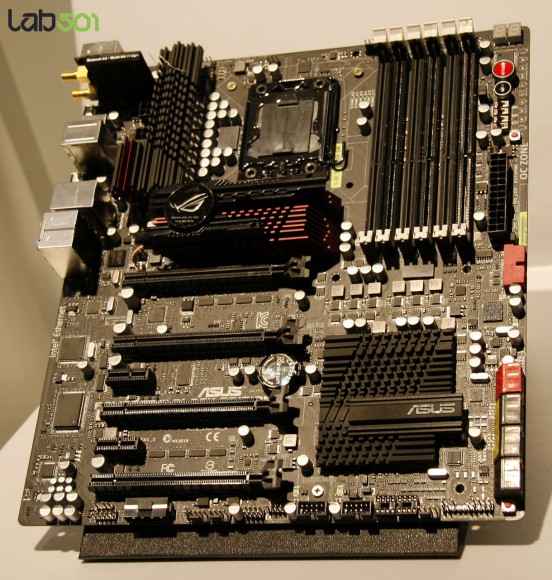 The board is nominally included in the well-known line of Republic Of Gamers (ROG) devices, but the BLACK EDITION modification is easy to distinguish even by its external design. The printed circuit board, as expected, is made in black, while the general noir style is also supported by interface connectors and expansion slots. Some of the connectors have a dark gray color, barely standing out from the overall tone of the board.
The board is nominally included in the well-known line of Republic Of Gamers (ROG) devices, but the BLACK EDITION modification is easy to distinguish even by its external design. The printed circuit board, as expected, is made in black, while the general noir style is also supported by interface connectors and expansion slots. Some of the connectors have a dark gray color, barely standing out from the overall tone of the board.
Course
Development in Java
Introduce the popular Java programming language at your best hour, and earn $1000 per ear of career
REGISTER!
ASUS RAMPAGE IV BLACK EDITION supports all processor models for the LGA2011 platform. Their list is very small, and includes four Sandy Bridge-E chips, as well as three CPUs with an updated Ivy Bridge-E architecture. In addition, after updating the firmware to the latest BIOS version (0507), the board is ready to take on board two dozen models of Xeon server chips (Ivy Bridge-EP). Among them, both the usual 4 and 6-core chips, as well as processors with 8, 10 and even 12 cores and 30 MB of cache memory. Whether such solutions will be needed as part of a home desktop system is a rhetorical question.
Among them, both the usual 4 and 6-core chips, as well as processors with 8, 10 and even 12 cores and 30 MB of cache memory. Whether such solutions will be needed as part of a home desktop system is a rhetorical question.
The board received a powerful VRM unit. The Extreme Engine DIGI+ III power subsystem is made according to an 11-phase scheme (8+3). NexFET power assemblies, chokes with rated current up to 60A, as well as 10K Black Metallic capacitors. MOSFET elements are located in one row at the top edge of the printed circuit board and are additionally equipped with a heatsink. The cooler itself is of medium size, while the overall design of the CO is not so trivial. With the help of a heat pipe, the cooler is connected to a large aluminum radiator, which in its shape resembles a frame that envelops the connectors of the interface panel. The main idea of this solution is to increase the dissipation area, while at the same time unloading the processor socket area as much as possible, allowing you to install overall coolers for the CPU or more freely manage the glass for liquid nitrogen.
Auxiliary power is connected using 8- and 4-pin EATX12V connectors.
The server roots of the processors for LGA2011 are easily traceable to the presence of a quad-channel memory controller, which is definitely an advantage for situations where high bandwidth is important. In this case, 8 slots are provided for the modules, thanks to which the total amount of RAM can be increased up to 64 GB. All connectors have a one-way locking mechanism, and this option comes in handy given the overall layout of ASUS RAMPAGE IV BLACK EDITION.
The board has six expansion slots — four full-format PCI Express x16 and two PCI Express x1. 40 available PCI-E 3.0 bus lanes allow you to create serious multi-adapter configurations. In particular, the board allows you to install up to 4 video cards, creating bundles of 4-way SLI/CrossFire. Depending on the number of graphics cards, full-size slots can work in the following modes: x16, x16+x16, x16+x8+x16 and x16+x8+x8+x8. In all cases, the bus bandwidth will be more than enough to synchronize the operation of video cards. This is another absolute advantage of LGA2011.
In all cases, the bus bandwidth will be more than enough to synchronize the operation of video cards. This is another absolute advantage of LGA2011.
We note the presence in the central part of the board of a metal bar with a plastic top cover, on which the logo of the gaming series is applied. The inscription is highlighted in red, unobtrusively pulsing during system operation. Yes, purely external decor, but overall it looks appropriate. For those who have a different opinion on this matter, illumination can be disabled in UEFI.
Four dual-slot graphics cards take up a total of 8 expansion slots. In this case, even the Extended ATX format does not save you from the situation when the manufacturer is forced to install the PCI-E x16 slot first, and not the buffer PCI-E x1. Potentially, such a layout may limit the choice of processor CO, not allowing the use of coolers with a large radiator width. For example, in order to install the Thermalright Archon Rev.A used in the framework for the test bench, we needed to expand it to 90 degrees. However, this model has one of the widest radiators in its class. Nevertheless, it is worth considering this nuance, first taking into account the distance from the center of the processor socket to the first PCI-E x16. Of course, this issue should be given special attention if all full-speed slots are used. If there are less than 4 video cards, then they can be installed in any free slots — performance will not decrease.
However, this model has one of the widest radiators in its class. Nevertheless, it is worth considering this nuance, first taking into account the distance from the center of the processor socket to the first PCI-E x16. Of course, this issue should be given special attention if all full-speed slots are used. If there are less than 4 video cards, then they can be installed in any free slots — performance will not decrease.
It’s good form for a four-adapter board to have an auxiliary power connector. In this case, a 4-pin Molex is installed at the bottom edge of the board. Such a safety net will not be superfluous, allowing you to eliminate the voltage drop on the PCI Express bus, thereby not worsening the overclocking performance when using multiple graphics adapters.
Just for such experiments, you may need the ability to disable some video cards. In order not to physically remove the adapters from the board, the necessary PCI-E x16 slots can be disabled using a special DIP switch. The latter is located in the upper right corner — the location of a whole set of auxiliary controls. Overclocker Valley, no less.
The latter is located in the upper right corner — the location of a whole set of auxiliary controls. Overclocker Valley, no less.
Also located here is a large illuminated power button and a system reset button. The segment indicator Q-Code reflects the stages of diagnostics during the start; by the code, you can quickly identify possible problems in the system. It also offers a very general express method that does not require decryption of codes. By the glow of the Q-LED indicators, you can identify which node failed during the initialization — the processor, memory, video card, or boot drive.
The «Overclocker Quarter» also has a button to activate the MemOK! technology, which allows you to deal with primary memory timings when they interfere with the initial start of the system. The LN2 Mode jumper and the Slow Mode toggle switch allow you to use mechanisms that allow you to avoid difficulties with starting the processor in conditions of negative temperatures (cold bug). At the edge of the board are ProbeIt pads that allow you to measure the voltage at various nodes using a multimeter.
At the edge of the board are ProbeIt pads that allow you to measure the voltage at various nodes using a multimeter.
Part of the controls are placed on the lower edge of the PCB. In particular, we are talking about the DirectKey key, by pressing which, after rebooting, you are guaranteed to get into the UEFI shell. The BIOS_Switch key is also located nearby. From the name it is easy to understand its purpose. Indeed, there are two BIOS chips on the board — the main and the backup, between which you can switch manually.
The LEDs placed next to the corresponding chips are used to indicate the active chip.
For those who want to fine-tune the cooling system, there are eight controllable channels to which fans can be connected using four-pin connectors. Two are allocated for the processor cooler (CPU_FAN), three more are for case coolers (HA_FAN). The same number of connectors (OPT_FAN) is available for connecting fans, the rotation speed of which will be regulated depending on the indicators of external thermocouples. Connectors for connecting sensors, which, unfortunately, are not included in the package, are located next to the corresponding fan connectors.
Connectors for connecting sensors, which, unfortunately, are not included in the package, are located next to the corresponding fan connectors.
Despite the fact that ASUS RAMPAGE IV BLACK EDITION has an enlarged E-ATX form factor, the board’s build-up is so dense that it’s simply impossible to find empty PCB sections. Something similar can be observed in the case of the most equipped mini-ITX models, but such a picture in the case of the E-ATX is even more impressive.
The board has 10 SATA ports to organize a disk subsystem. Recall that the capabilities of the Intel X79, which was introduced at the end of 2011, are rather limited in terms of supporting high-speed interface versions. The chipset offers two SATA 6 Gb/s and four SATA 3 Gb/s channels. All of them are included in the fee. Four more SATA 6 Gb / s ports serve two additional ASMedia ASM1061 controllers. Connectors corresponding to SATA 3 Gb / s are black, lines with a widow of high bandwidth are dark gray.
The manufacturer did not disregard the owners of external drives with eSATA interface. The third ASMedia ASM1061 chip is installed next to the interface panel, servicing two eSATA ports (6 Gb/s).
USB 3.0 also requires additional controllers. To provide the board with such an appropriate number of ports, three ASM1042 chips and one ASM1074 are involved. As a result, on the interface panel we have 6 USB 3.0 connectors and one more connector for outputting two ports to the front panel of the case.
The verified Intel 82579V controller is used in this case for Ethernet operation.
The communication functionality of the board is enhanced with the AzureWave AW-CE123H module, which contains a dual-band (2.4 GHz and 5 GHz) Wi-Fi 802.11a/b/g/n/ac controller and Bluetooth 4.0. It was initially fixed in the area of the interface panel, where two connectors immediately go out for connecting an external antenna that amplifies the signal.
To indicate the activity of the wireless controller, the module has two indicators — green for Wi-Fi and blue for Bluetooth.
The board’s audio subsystem, called SupremeFX Black, deserves special attention. For the layout of the audio path, a separate isolated section of the PCB is used, separated from the main printed circuit board by an illuminated track. The codec chip (Realtek ALC1150) is covered with a metal casing. The circuit uses a range of audiophile components, including WIMA thin-film capacitors, custom ELNA capacitors, a CirrusLogic CS4398 D/A converter, operational amplifiers, and a TPA6120A2 amplifier for driving high-impedance headphones.
The board’s capabilities are enhanced by a special OC Panel control panel. We have already seen a similar device during the review of ASUS Maximus VI Extreme, the top model for the LGA1150 platform. The same accessory is now available for the LGA2011 solution.
This is an external module with a segment display that allows you to monitor the status and control various system parameters in real time (multipliers, system bus frequency, fan speed, power supply voltages of various nodes).
The OC Panel is connected using the supplied cable, which is connected directly to the module and to a special connector on the motherboard. You also need a power cable designed for SATA devices.
In Normal Mode, the OC Panel is inserted into a special bracket, after which this assembly can be installed in a free bay of the case for 5.25-inch devices.
In Extreme Mode, which is used in an open bench environment, OC Panel provides additional options. For example, 4 additional channels for connecting fans, the ability to connect probes that allow you to measure negative temperatures, VGA Hotwire to control the parameters of ROG video cards, as well as a number of control keys.
The protective plastic cover must be removed to access the functional connectors.
Obviously, OC Panel is primarily of interest to enthusiasts who often experiment with their system. At the same time, it is a very good idea to make such an accessory useful, including for those who do not check their liquid nitrogen supplies daily.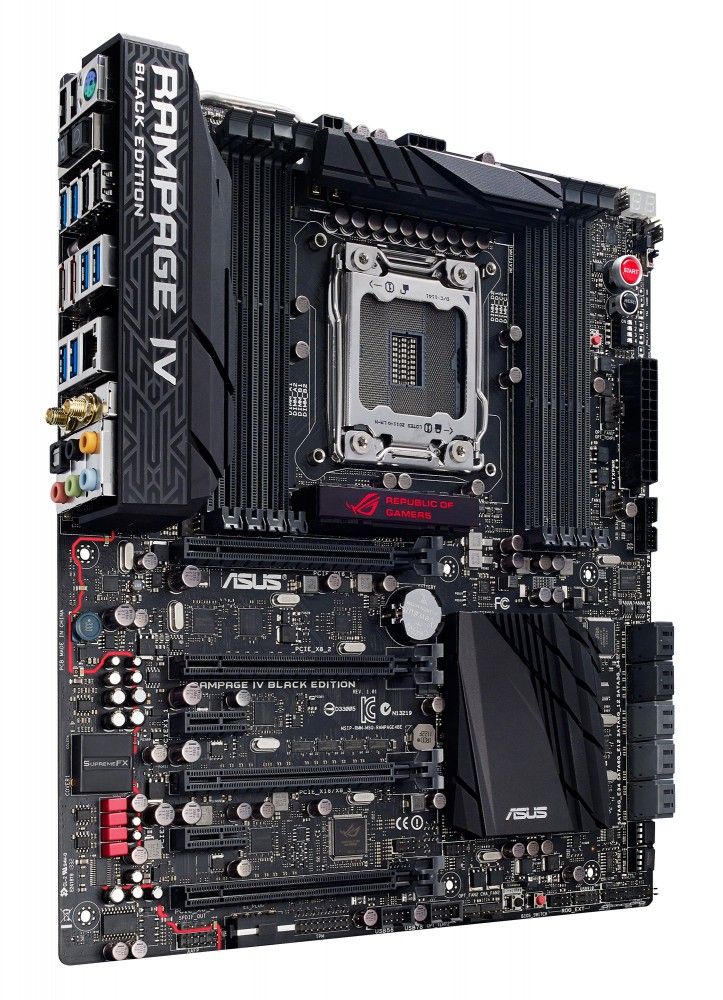 In Normal Mode, the device will in any case be useful, and not gather dust on the shelf, even if an open stand is not your method.
In Normal Mode, the device will in any case be useful, and not gather dust on the shelf, even if an open stand is not your method.
The composition of the interface panel is quite diverse. It houses a PS/2 combo, four USB 2.0 ports, six USB 3.0 ports, two eSATA connectors, and an Ethernet socket. In the absence of video outputs, at first glance, it seems that something is missing (processors for LGA2011 do not have integrated graphics). However, the manufacturer found something to cover the gaping voids. First of all, we note the connectors for connecting an external antenna of the wireless network module. There are also two keys on the panel. One of them is responsible for resetting the CMOS memory, the second is used to activate ROG Connect technology, which allows you to control the system from another PC connected to the slave via USB. To connect acoustics, five 3.5 mm audio jacks and a digital optical S/PDIF are provided.
Delivery set
The delivery set of ASUS RAMPAGE IV BLACK EDITION fully corresponds to the status of a flagship solution. Note that the board comes in a black box, with a character on the front panel of the box that is easily recognizable by fans of the Assasin’s Creed series of games.
Note that the board comes in a black box, with a character on the front panel of the box that is easily recognizable by fans of the Assasin’s Creed series of games.
Open the top cover and see the board through the clear plastic window. The spread also contains general information about some proprietary technologies.
The number of accessories is dizzying. We have not seen such a serious equipment for a long time. Traditionally, the kit includes a user manual, in this case, a 200-page Talmud in English alone, a disk with drivers and software, 10 SATA cables, and a plug on the back of the case. The board comes with flexible SLI and CrossFire bridges, as well as hard adapters for creating configurations with three NVIDIA video cards and four adapters in 4-way SLI mode.
Separate positions include the OC Panel module, as well as a bracket for its installation in a 5.25-inch bay and a cable for connecting to the motherboard.
The box also includes an external antenna, ROG Connect cable, ASUS Q-Connector adapters, a set of stickers for interface cables, and a magnet with the logo of the gaming series.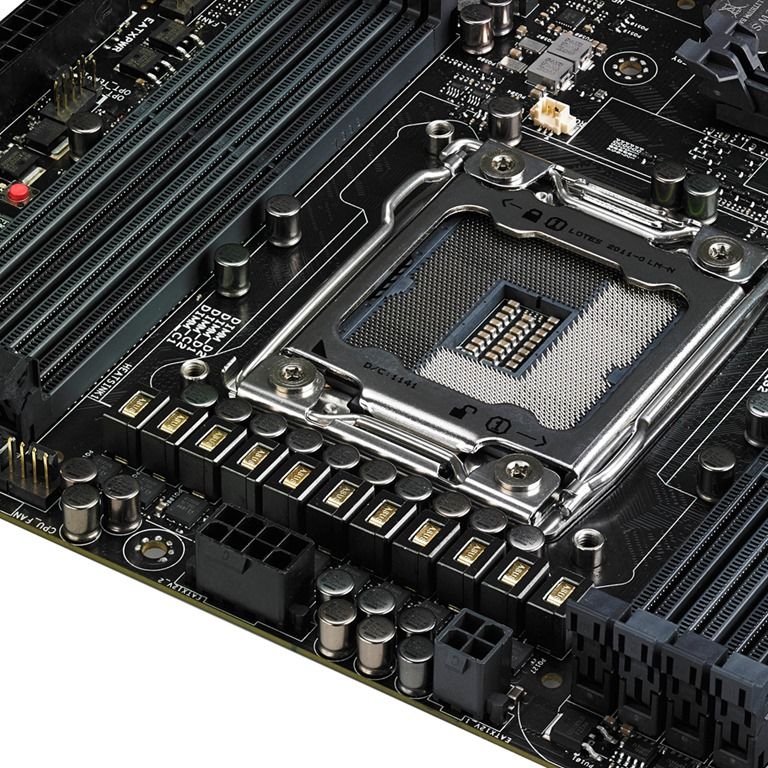 During extreme experiments when attaching a glass, an X-Socket plate can come in handy. But what fans will definitely not refuse to play is a coupon for downloading the full version of Assasin’s Creed Black Flag.
During extreme experiments when attaching a glass, an X-Socket plate can come in handy. But what fans will definitely not refuse to play is a coupon for downloading the full version of Assasin’s Creed Black Flag.
UEFI
The UEFI shell is habitually well structured and easy to use. The board uses a stylized skin with dark undertones. A description of the number of various settings would double the amount of material, so we only note that the most sophisticated users will find something to do here.
Supply voltage ranges are very large. Judging only by these parameters, it is obvious that the board is ready for extreme overclocking. So, the processor supply voltage can be adjusted within 0.8–2.36 V, memory modules — 1.2–2.4 V.
ASUS RAMPAGE IV BLACK EDITION offers several options for express overclocking, which we tested in practice with a Core i7-4960X processor installed in the system. By changing the CPU Level Up parameter to «4.1 GHz», we got the required final processor frequency.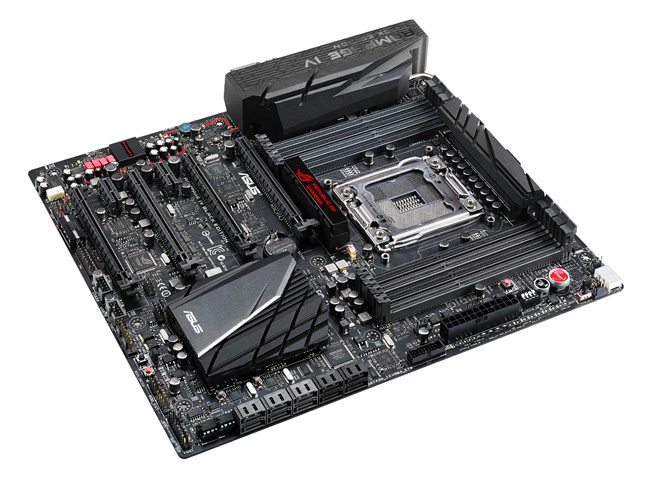 At the same time, the chip supply voltage is set to 1.264 V.
At the same time, the chip supply voltage is set to 1.264 V.
Raising the bar to “4.3 GHz”, we obtain the desired value at 1.28 V.
“4.5 GHz” increases the chip supply voltage to 1.408 V.
In this mode, our processor instance remains operational. In general, it is worth noting a very correct CPU tuning. The selected voltage is quite adequate to the situation. There is no frantic desire of the manufacturer to get a beautiful figure, infinitely overestimating the supply voltage, as happens in some cases. Levelup can be used for express overclocking. Although in this case, you should not forget about a good cooler. Chips with a TDP of 130 W in stock require good cooling, and even more so after overclocking.
In the shell, for convenience, it is also possible to load profiles that increase the frequency of the system bus. We managed to get to 180 MHz without any problems that arose only at 190 MHz.
By increasing the supply voltage to 1. 41 V in manual mode, we actually got 1.424 V and stable 4.6 GHz. For a six-core and an additional 100 MHz is a good increase. Although the work is already at the limit, for such frequencies it is already worth thinking about more efficient cooling systems, the air copes already mediocrely.
41 V in manual mode, we actually got 1.424 V and stable 4.6 GHz. For a six-core and an additional 100 MHz is a good increase. Although the work is already at the limit, for such frequencies it is already worth thinking about more efficient cooling systems, the air copes already mediocrely.
The board does a good job of dissipating heat from the VRM elements. The radiator under the load of the overclocked processor warmed up to 53–55 C. So everything was not in vain. The pipeline and the outlandish design of the additional cooler work. The radiator on the chipset warmed up to 43 C — without any cause for concern.
You can use Ai Suite III to manage system settings from the OS. Note that the model under consideration supports the entire list of current technologies and software solutions that are typical for top-end devices of the ROG series. These are the GameFirst II network traffic optimizer, and the Sonic Radar movement scanner for tracking virtual adversaries, and the ability to create a RAM disk using the ASUS proprietary utility.
Video review ASUS RAMPAGE IV BLACK EDITION
Results
ASUS RAMPAGE IV BLACK EDITION justifiably receives the status of the flagship of the line of ASUS motherboards for the LGA2011 platform. The model received not only a powerful power unit for successful overclocking of the processor, but also an enviable set of technical devices and accessories that simplify overclocking experiments. The 802.11 ac networking module is a good argument for those who need the fastest wireless connection, while the presence of an improved sound subsystem and the ability to use up to 4 video cards (SLI / CrossFire) will please those who want to create the most charged gaming platform .
The fee is very good for those cases when you just want to buy a thing «for all the money» (~$700), but at the same time get a really high-quality solution. At the moment, perhaps, this is the best model for LGA2011.
Liked it
+ Wide functionality
+ Overclocking features and convenience
+ Extended package
+ 4-way SLI/CrossFire support
+ Efficient cooling system
+ Availability of OC Panel module
+ Wi-Fi 802.11ac and Bluetooth 4.0 Controller
+ Possibility to connect 8 fans
Disliked
— High price
Test device provided by ASUS, www.asus.ua
|
ASUS Rampage IV Black Edition Notify when available |
|
| CPU socket | Socket 2011 |
| North Bridge | — |
| South Bridge | Intel X79 |
| Northbridge cooling | — |
| South bridge cooling | Radiator |
| VRM cooling | Radiator |
| Integrated video | — |
| PCI | — |
| PCI Express x4 | — |
| PCI Express x1 | 2 |
| Graphic interface | 4xPCI-E x16 3. 0(x16, x16+x16, x16+x8+x16, x16+x8+x8+x8) 0(x16, x16+x16, x16+x8+x16, x16+x8+x8+x8) |
| DIMM | 8xDDR3 (2800MHz up to 64GB) |
| IDE (Parallel ATA) (chipset/additional controller) | — |
| Serial ATA (chipset/additional controller) | 4/- |
| SATA Revision 3.0 (chipset/additional controller) | 2/4 |
| Main power connectors | 24+8+4 |
| Power supply | 4-pin Molex |
| FAN | 8 |
| S/PDIF | + (exit) |
| Audio codec | Realtek ALC1150 (7.1) |
| Ethernet | Intel 82579V (GbE) |
| SATA | — |
| SATA Revision 3.0 | ASMedia ASM1061 |
| PATA | — |
| IEEE 1394 (FireWire) | — |
| USB 3.0 | ASMedia |
| LAN | 1 |
eSATA Rev.
|

 Total 8 GB
Total 8 GB 0 x16 slots
0 x16 slots  0 bracket
0 bracket